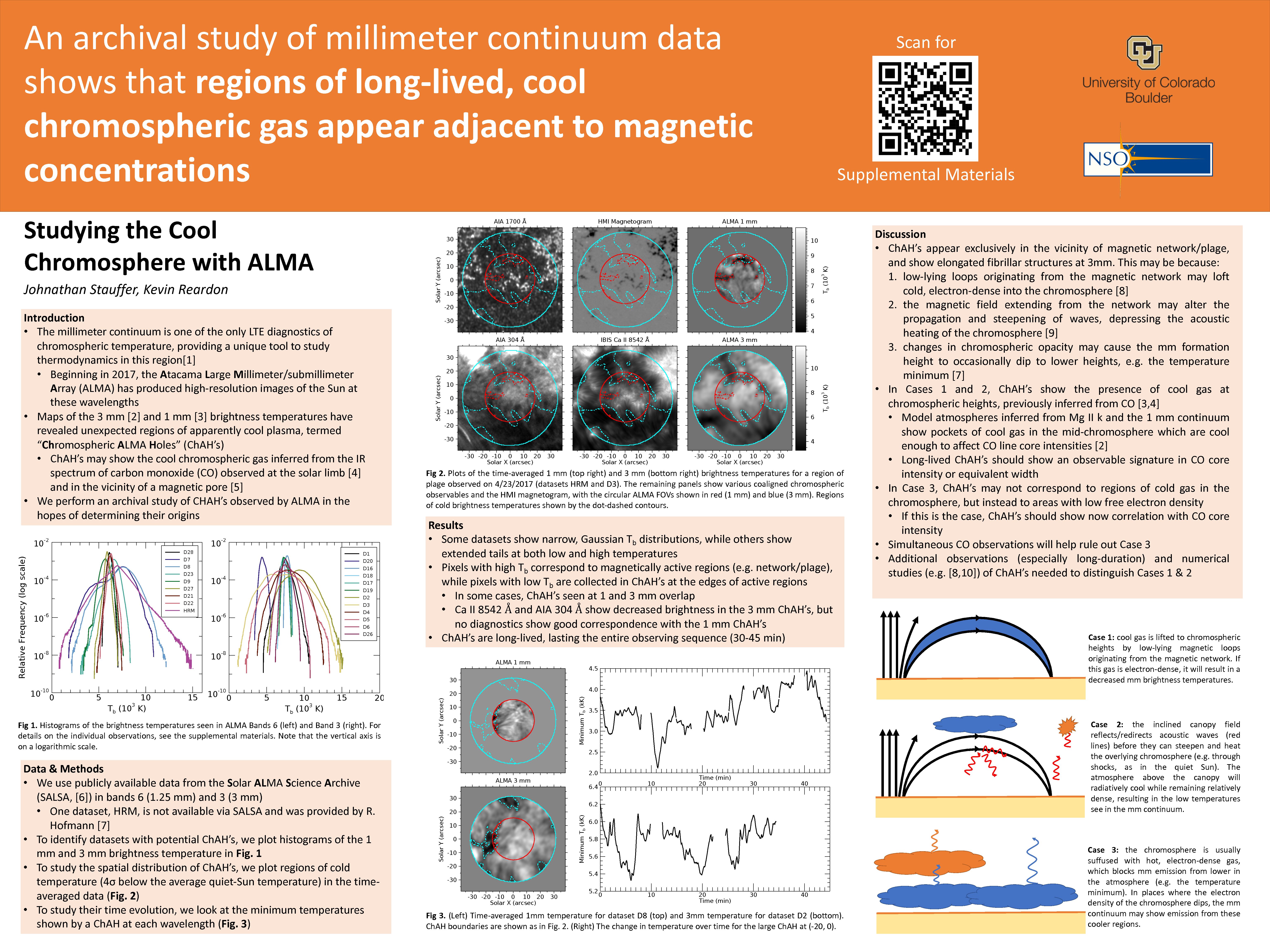Authors: Johnathan Stauffer (CU Boulder), Kevin Reardon (NSO)
The solar chromosphere is a crucial interface for the overall energy balance of the stellar atmosphere, as it mediates the transfer of the magneto-convective energy generated at the solar surface to the corona and solar wind. However, interpretation and modeling of the optical and UV lines usually used to study the chromosphere are complicated by their non-LTE formation characteristics – in particular, such diagnostics are disproportionately sensitive to areas of hot gas in the chromosphere, limiting our understanding of its thermal structure. On the contrary, the millimeter continuum, an LTE measure of the chromospheric electron temperature, occasionally shows regions of cold plasma with brightness temperatures <4000 K at 1.2 mm and <6000K at 3mm. While the heights of emission of these “cold” regions is not clear, the idea that there of low temperature plasma in the chromosphere has drawn comparison to similar indications from observations of solar carbon monoxide (CO) lines, whose vibrational spectrum shows sub-4000 K brightness temperatures extending to heights of 1000 km above the base of the photosphere. Using public data from the Solar ALma Science Archive (SALSA), we systematically search for and characterize occurrences of low-temperature plasma in the different solar targets.


